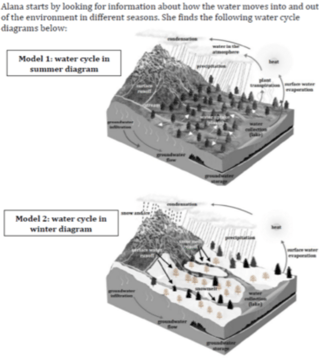The Next Generation Science Standards define the minimum performance expectations for students. In order to meet these minimum requirements, students must be able to:
- Apply performance expectations in multiple contexts and connect them with other standards
- Use science and engineering practice skills
- Understand core science and engineering ideas (as well as math and language ideas)
- Understand the dynamic relationships that exist between different concepts
It is crucial to note that standards define what the basic elements are for effective STEM instruction. They don’t, however, define how a teacher presents material and teaches students or what the teacher will teach.
Finally, they are not tasks that can simply be shown to students, who can then replicate them. These standards offer a framework for instruction that, if properly done, will engender scientific modes of thinking in students.
Because the standards do not dictate what learning is to occur or how it should occur, they cannot in and of themselves comprise a curriculum. Next Generation Science Standards merely define the minimum performance expectations of which students should be able to demonstrate mastery.

Standards define how students are to think of science and engineering and how teachers are to help them approach it, but do not actually provide the concepts necessary for each individual lesson. Therefore NGSS standards are applicable in a vast array of contexts.
This can be a difficult concept, so it may be helpful to unpack this difference using the example of a student taking a driver’s test. The driver’s test examiner may ask the student to take various turns, merge onto streets from different angles or lanes, and parallel park. The driver’s test takes place in a limited geographical area, with the student driving a prescribed route and following the directions given.
However, driving that one route is not the only task that student will need to do once he or she has a license. Since the examiner cannot possibly test all destinations new drivers may visit or road situations they may encounter, the examiner instead tests their skills in a limited context. If a student passes the test, it is because the examiner has reasonable confidence that the new driver has met performance expectations in that context, and therefore has the skills and the understanding necessary to apply to all other driving contexts as well.
The NGSS standards, just like state and federal driving regulations, determine the rules of the road.
They don’t tell us where to drive, but rather the minimum requirements we must master to drive, no matter where we are in the country. Likewise, the Next Generation Science Standards tell us the minimum requirements needed to teach science and engineering authentically in a way that is focused on necessary skills and will lead to students being able to perform a particular expectation. They do not define or represent a specific task.
This is a crucial element to recognize: The Next Generation Science Standards, when you look at them, are not tasks.
They're not telling us what or how to teach. Instead, they're telling us the fundamentals that need to be part of a student’s education. How those fundamentals are presented in a classroom is up to the teacher.
Context is central to learning.
The standards merely set the expectations for performance, but they are not the context. The context changes because the standards apply in almost an infinite number of contexts. They actually interact and connect with many other standards by virtue of the way they were designed, all within one context at one point, another context at a later point.
What is crucial to understand about the Next Generation Science Standards is that they are not focused on isolated concepts and isolated content, like many traditional science standards are. They are instead focused on performance expectations, which can be fulfilled in a variety of different ways and different contexts.
To call them “standards” is almost inaccurate, at least if you use a traditional understanding of what comprises a standard. The Next Generation Science Standards are what students are expected to be able to demonstrate as a result of what they have learned and experienced in the classroom. That means that they require mastery of the skills specific to science and engineering, which are the eight practices that we talked about above. Those have to be internalized.
Meeting the standards also requires understanding the disciplinary core ideas, which traditionally we think of as content. The content under the Next Generation Science Standards, though, is different. It's connected. It's not a set of isolated facts, but rather is more dynamic, interrelated in numerous ways.
Demonstrating performance mastery, another component of meeting the standards, requires understanding the relationship between pieces of content that might at first seem unrelated.
Specifically, students must see how the content interacts and connects; they must be able to gain a grasp of the concepts from a systems thinking dimension, which the Next Generation Science Standards calls crosscutting concepts.

Crosscutting concepts – for instance, patterns, cause and effect, systems models, and structure and function – are large concepts that bridge disciplines and stretch across STEM concepts. They are crucial for students to understand, and help them form a larger and more comprehensive picture of the world.
In the example on the left, a crosscutting concept might be learning why a waterway is different at different times of year, by studying the surrounding environment and patterns. In learning such skills, students are not only “acting like” a scientist or engineer; they have become one.
By using skills as well as experiencing, developing, and using content, they are able to see the connections between their current topic and other areas of content, and to interact with a much wider array of material.



